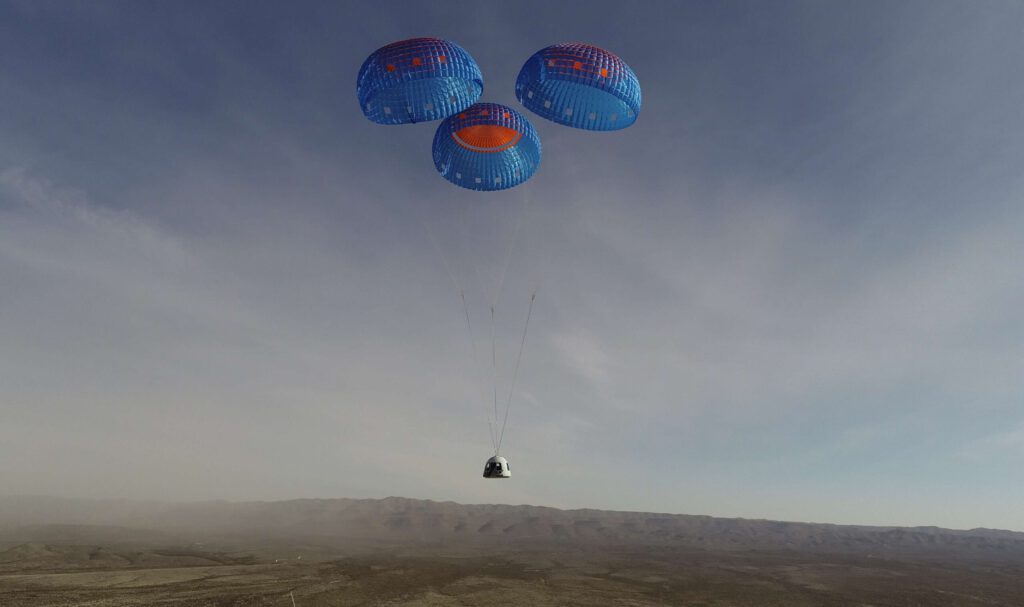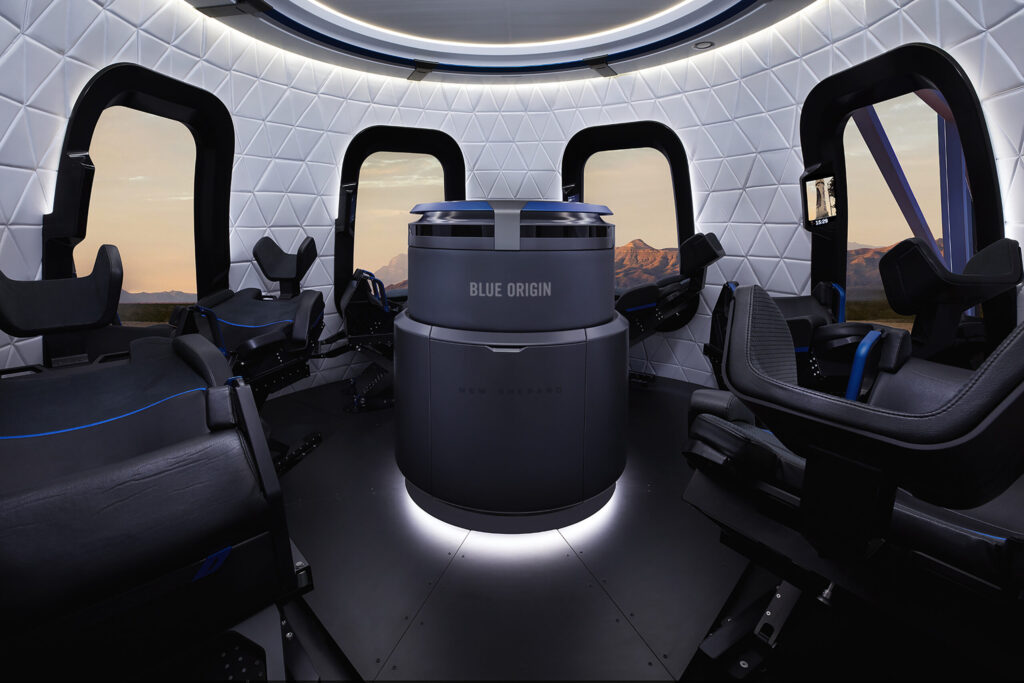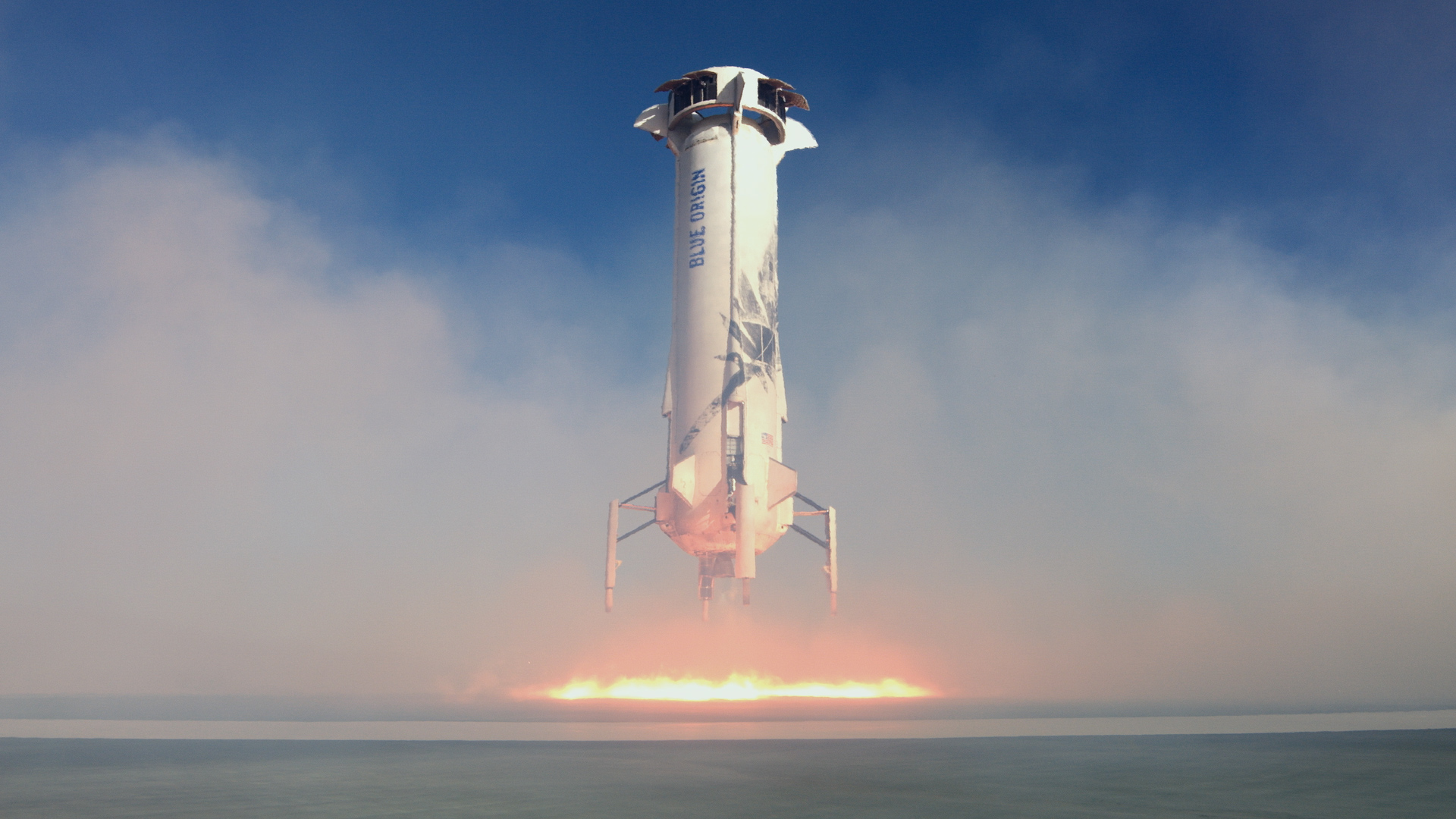As the VMS Eve two-plane mothership hurtles higher into Earth’s atmosphere, it leaves the New Mexico desert basin shrinking in the distance below. The aircraft soars and continues its climb. Faster. Faster.
Suddenly, a woman’s voice pierces through the intercom static and is heard saying, “Three. Two. One. Release, release, release!” At that moment, the mothership jettisons the VSS Unity spaceplane carrying its two pilots and four passengers. The VSS Unity achieves a speed of Mach 3 after breaking away from the main aircraft and continues its ascension to space, reaching an altitude of 53.5 miles.
Among its crew of respected mission specialists, Virgin Galactic founder and billionaire tycoon Sir Richard Branson chuckles with glee as he begins to make out the Earth’s curvature below while peering through one of the spaceplane’s 12 large windows.
The pilot’s voice sounds the command. “You are clear to unstrap,” followed by “welcome to space!” All passengers, save for Branson, marvel at their weightlessness and float about the craft’s cabin while the mustachioed Branson continues to observe the wondrous view from the comfort of his seat.
“To all you kids down there,” he begins. “I was once a child with a dream looking up to the stars and now, I’m an adult in a spaceship with lots of other wonderful adults looking down to our beautiful, beautiful Earth. For the next generation of dreamers, if we can do this, just imagine what you could do.”
On July 11, Virgin Galactic successfully achieved its first crewed spaceflight, and the world watched with bated breath as the event was broadcasted live for all to see.
Founded in 2004, Virgin Galactic Airways is the brainchild of Branson, whose interest in searching for vehicles to launch tourists on suborbital flights dates back to 1999.
In the years that followed the company’s emergence, Branson and former New Mexico Governor Bill Richardson solidified plans to locate the spaceflight company’s world headquarters at a custom-built spaceport near Truth or Consequences, NM. Dubbed ‘Spaceport America,’ the hub stretches across 27 square miles of state land and began construction on June 19, 2009, to the tune of $225 million.
Since then, there have been several advancements in research and engineering to account for the various spaceplane and carrier aircraft that led to the recent 22nd test flight of the VSS Unity, which also marked its first launch with a full crew in the cabin that, of course, included Branson himself.
“Our mission is to make space more accessible to all,” Branson said. “In that spirit, and with today’s successful flight of VSS Unity, I’m thrilled to announce a partnership with Omaze and Space for Humanity to inspire the next generation of dreamers. For so long, we have looked back in wonder at the space pioneers of yesterday. Now, I want the astronauts of tomorrow to look forward and make their own dreams come true.”

Virgin Galactic partnered with Omaze, a charity fundraising platform, and Colorado-based Space for Humanity (S4H) in offering the unique opportunity for two ordinary people to partake in suborbital flight. This sweepstakes began on July 11 and ended on September 1.
Those interested were able to enter the contest on the Omaze website, which directed applicants to a page asking for a donation to support S4H. While participants could have donated any amount they wished, a donation was not necessary to enter or win the sweepstakes. The winner and guest will be announced on September 29, and the space-faring experience should take place in early 2022.
S4H was founded by Dylan Taylor in 2017, with a mission statement that reads: “Through our citizen spaceflight program, leadership training, and collaborative efforts to educate the public, we are setting the stage to create the world we want, both here on Earth and throughout the cosmos.”
S4H is an organization that embraces advances in commercial space travel and human spaceflight and plans to work directly with launch providers to meet the goal of truly democratizing space. S4H plans to fly with both Virgin Galactic, Jeff Bezos’s Blue Origin and Space Perspective.
“Space compels us to ask deeper questions and what Space for Humanity is doing is working to expand the opportunity for more people to shift their perspective to then catalyze meaningful conversations that ideally spark positive change,” Taylor said in a statement.
The path toward commercial space travel is not exclusive to Virgin Galactic alone. Just nine days after the successful launch of the VSS Unity, former Amazon CEO and magnate Jeff Bezos and his space company Blue Origin answered back by completing their first crewed space flight.
Blue Origin was founded by Bezos in 2000 with the goal of creating a future where millions of people are capable of living and working together in space for the benefit of mankind, while also making spaceflight more cost-effective and accessible.
July 20 marked the 52nd anniversary of the 1969 moon landing by the Apollo 11 and became the day that Bezos, his brother Mark Bezos, 82-year-old American aviator Wally Funk and an 18-year-old recent high school graduate named Oliver Daemen boarded the crew capsule connected to the New Shepard reusable launch booster rocket with their sights set on the stars.
The Blue Origin team traveled more than 60 miles above Earth, flying just past the Kármán line, which represents the internationally recognized boundary of space. This travel distance was larger than what the VSS Unity achieved during its flight.
Bezos and company reached sub-orbit and observed the planet below for a total of 11 minutes, during which they experienced weightlessness and delighted in their shared experience before safely returning to Earth.
“Today was a monumental day for Blue Origin and human spaceflight,” said Bob Smith, CEO, Blue Origin. “I am so incredibly proud of Team Blue, their professionalism, and expertise in executing today’s flight. This was a big step forward for us and is only the beginning.”
In October, Blue Origin sent William Shatner to space. At 90, the former Captain Kirk became the oldest person to leave the earth’s atmosphere. The trip brought unprecedented media coverage to space travel as the future.
While media outlets were abuzz with the successes of Virgin Galactic and Blue Origin in achieving their first crewed space flights, SpaceX dared to think bigger.

Historically, SpaceX has worked closely with The National Aeronautics and Space Administration (NASA) and has been delivering precious cargo and other useful materials to and from the International Space Station (ISS) since 2012.
On September 15, SpaceX launched its first all-civilian spacecraft crew into Earth’s orbit from a launchpad at the Kennedy Space Center in Florida. The mission, called Inspiration4, saw a diverse crew of four space tourists spending a total of three days in a modified 27-by-13-foot Dragon capsule; though it has been stated that the crew could remain in orbit for about a week if needed.
The mission was funded by young billionaire entrepreneur, Jared Isaacman, who spent an estimated $200 million to make the voyage a reality. One of the goals for the mission was to also raise awareness and funds for St. Jude Children’s Research Hospital with a fund-raising drive coinciding with the mission.
What makes this spaceflight mission particularly significant is that it is the highest altitude voyage in more than 20 years. It surpasses distances set by the ISS and the Hubble Space Telescope with the Inspiration4 crew soaring to orbit some 360 miles up.
Perhaps the biggest question is how much will be becoming an astronaut cost you?
Well, about 600 tickets have already been purchased for a spaceflight with Virgin Galactic, with prices ranging from $200,000 and $250,000 for early customers. It was recently announced by Virgin Galactic that tickets to the public will now start at $450,000 a seat.
Meanwhile, Blue Origin has sold nearly $100 million in tickets for future participants, according to Bezos. And while his space company has yet to let on exactly how much a single seat will cost the public, Bezos has said that, “The demand is very, very high.”
Some might argue that commercial space travel is too costly and that the money leaving the hands of billionaires could be better put towards eliminating problems that impact most people living on our planet.
Yet there are others like Dr. Moriba Jah, a space scientist and aerospace engineer who thinks that things are a little more complicated than they seem.
Dr. Jah’s field of expertise is astrodynamics and before he became an associate professor at the University of Texas at Austin, he worked as an Air Force cop and at NASA in his late twenties as a graduate of the University of Colorado.
“You can do good things to give people education, healthy water and you can [still] go to space,” says Jah, who also argues that the billionaire class-leading commercial space travel efforts are already helping to ease societal woes through the work they do at their foundations. “It’s a false equivalency because they’re already doing [the work],” he says.
“This is a good sign, and you should embrace it and encourage it to happen more,” Jah continued. “Because the sooner we get through the tsunami of rich people that do this, then this becomes normalized, and space becomes accessible to you and me.” ■











